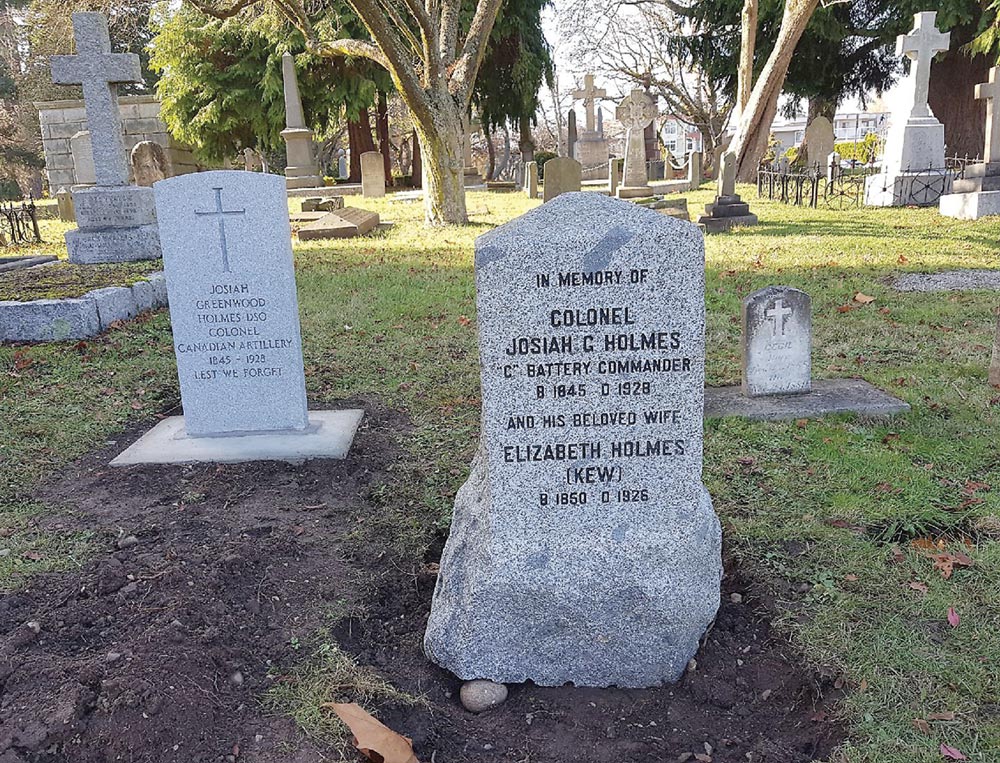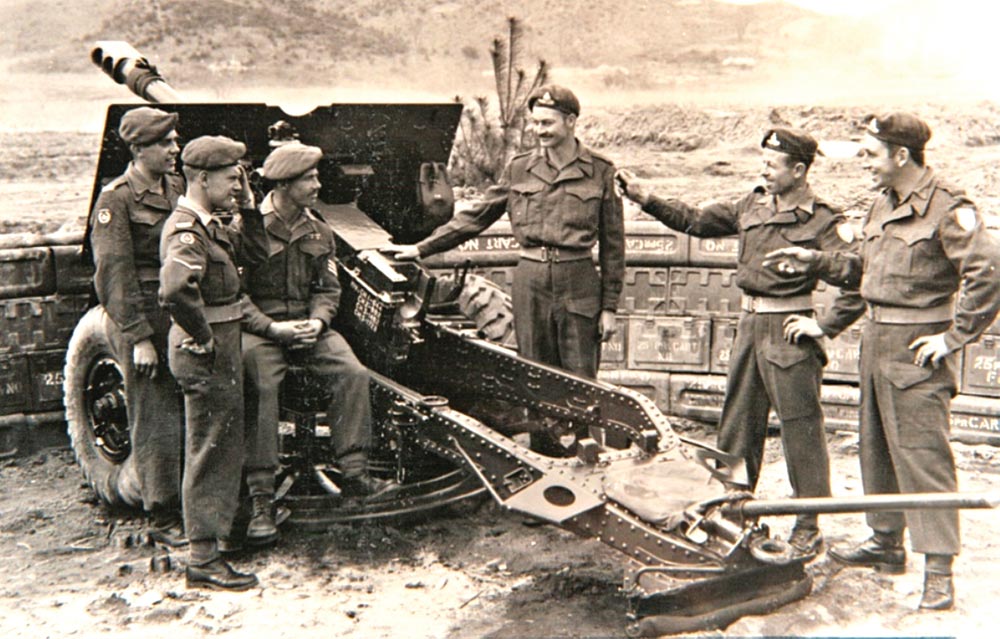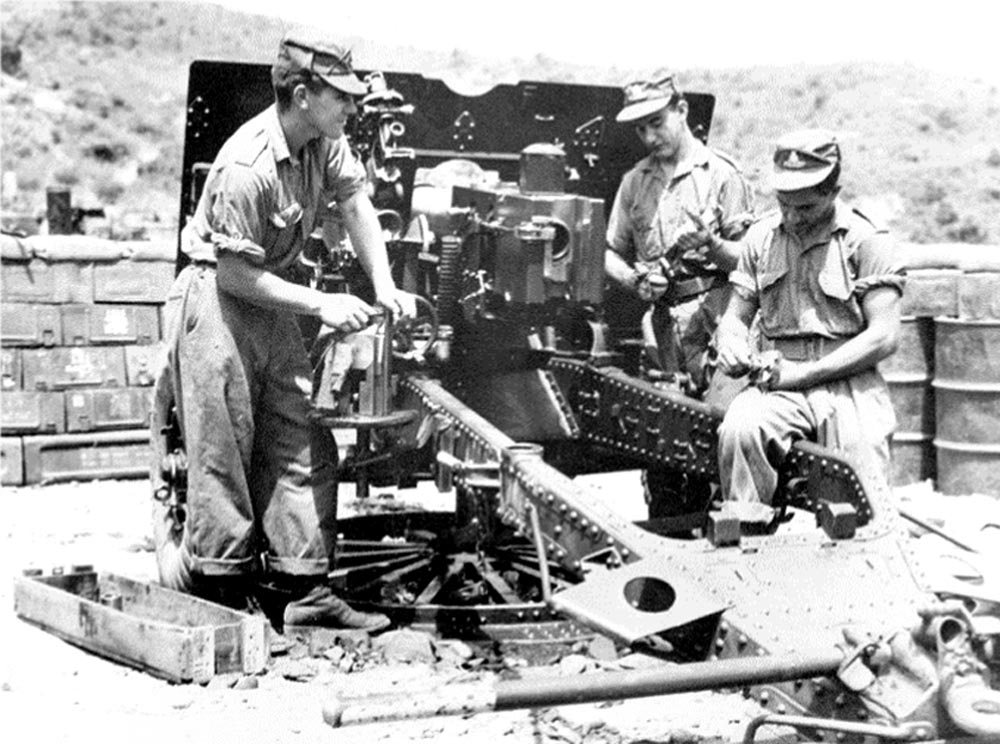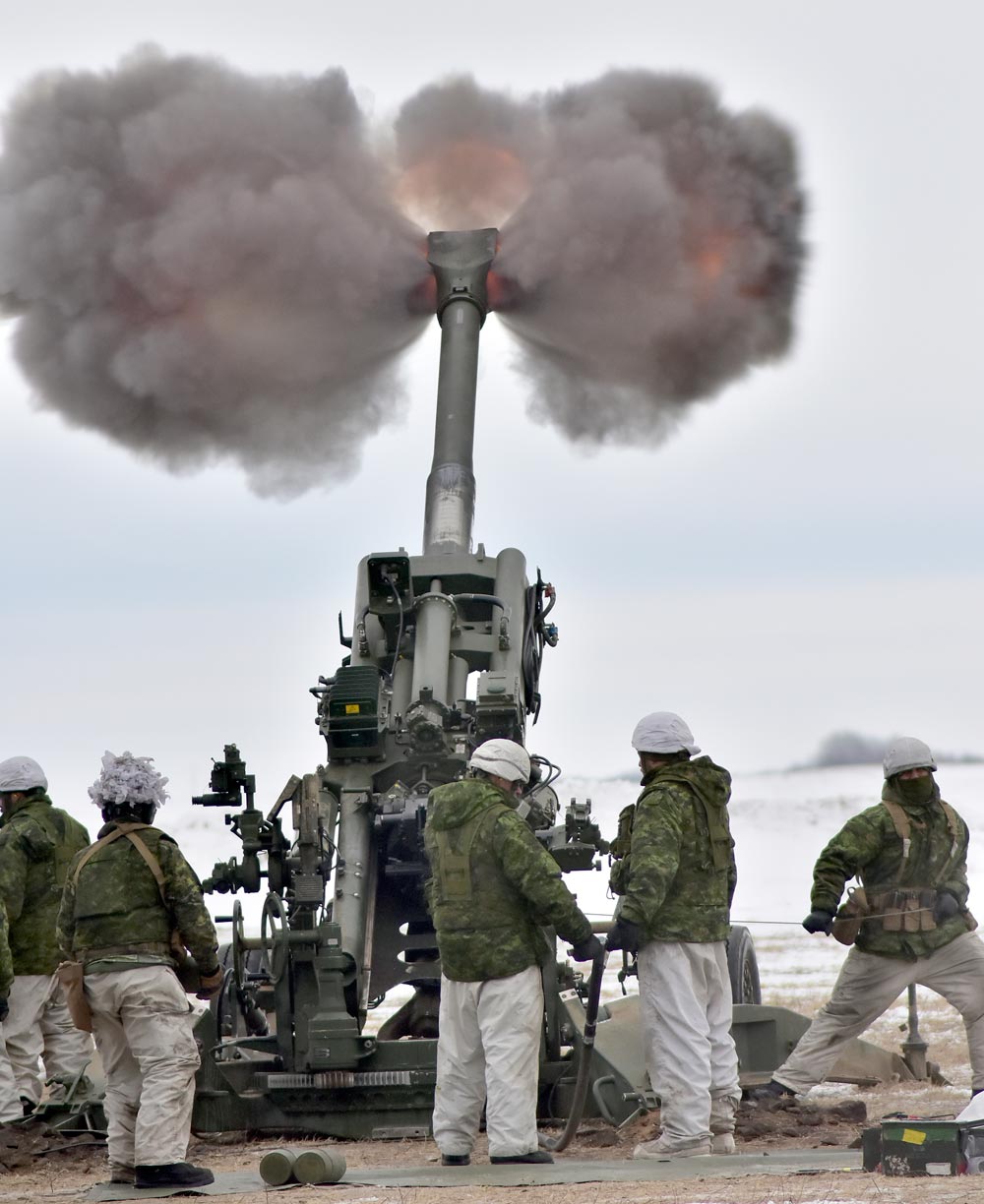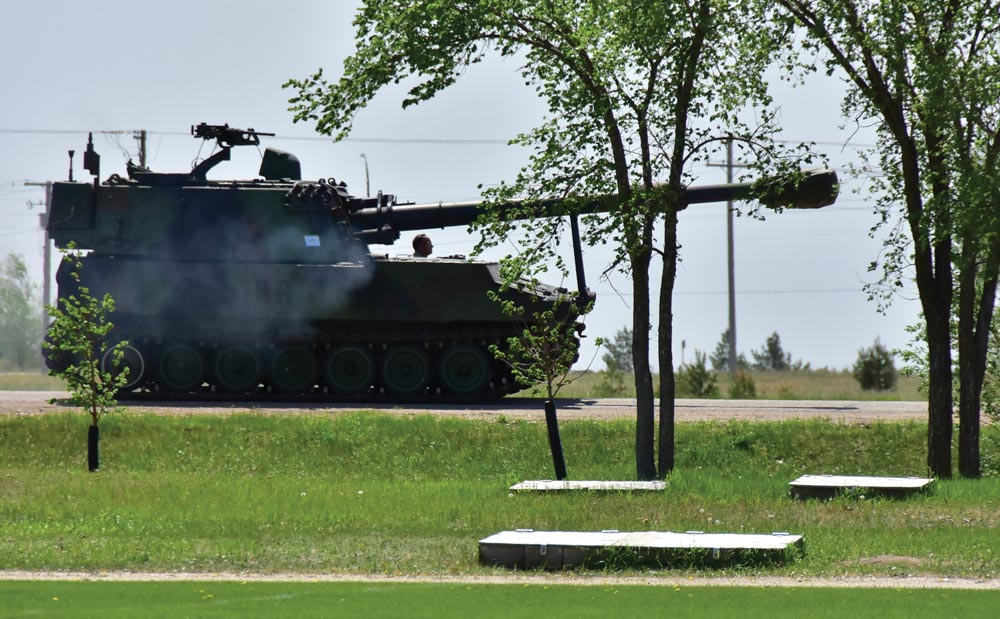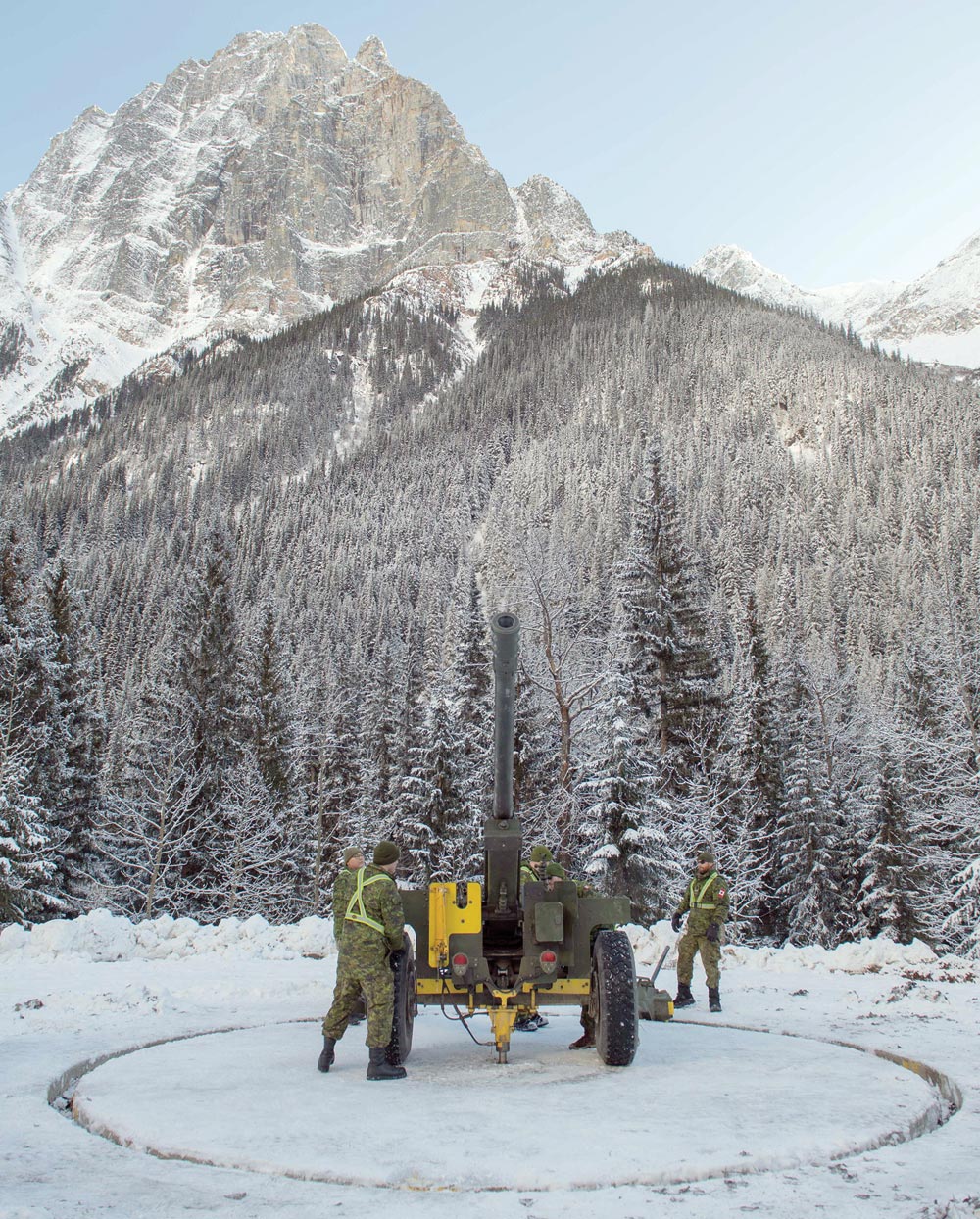
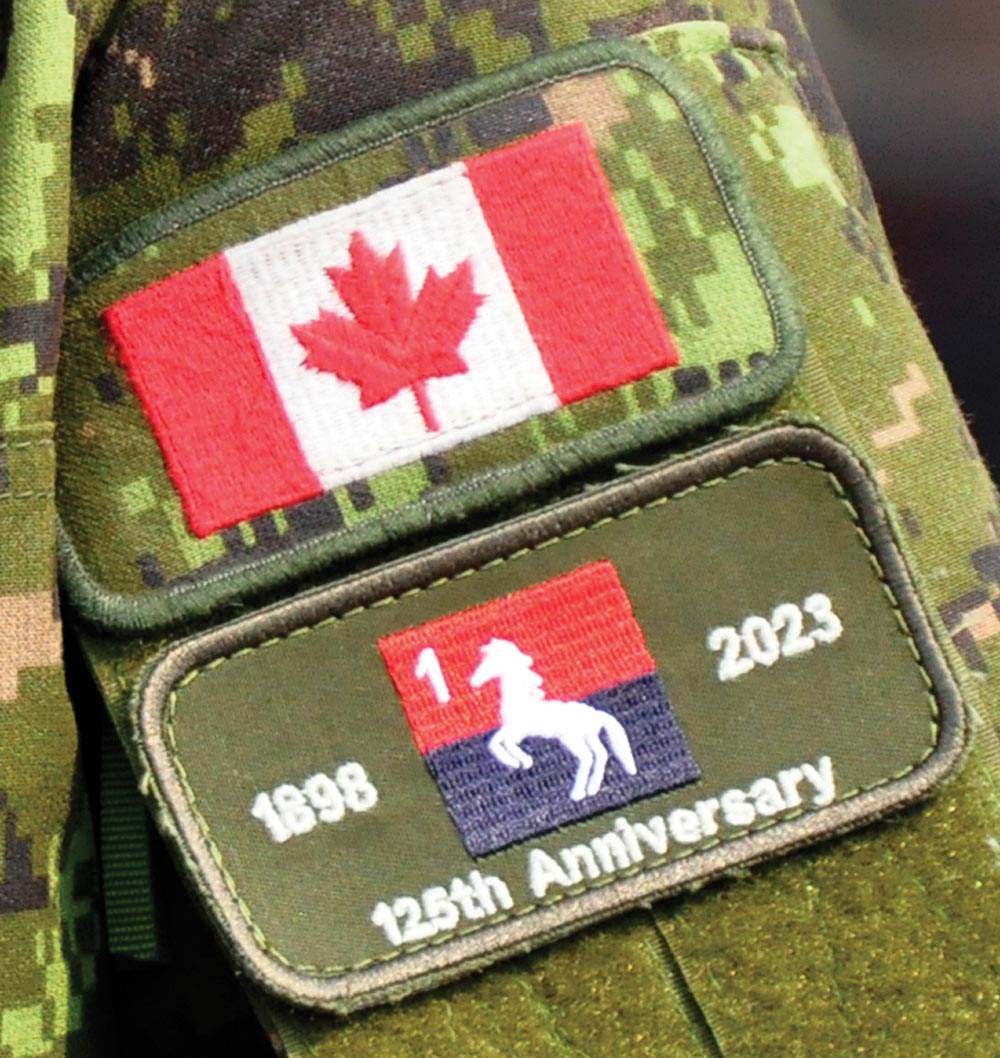
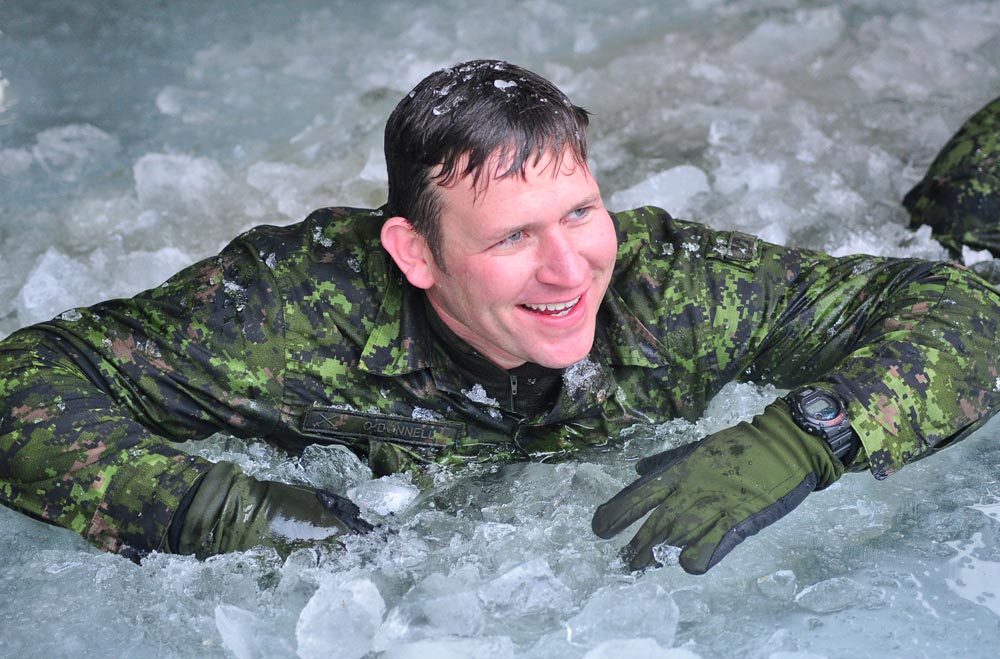
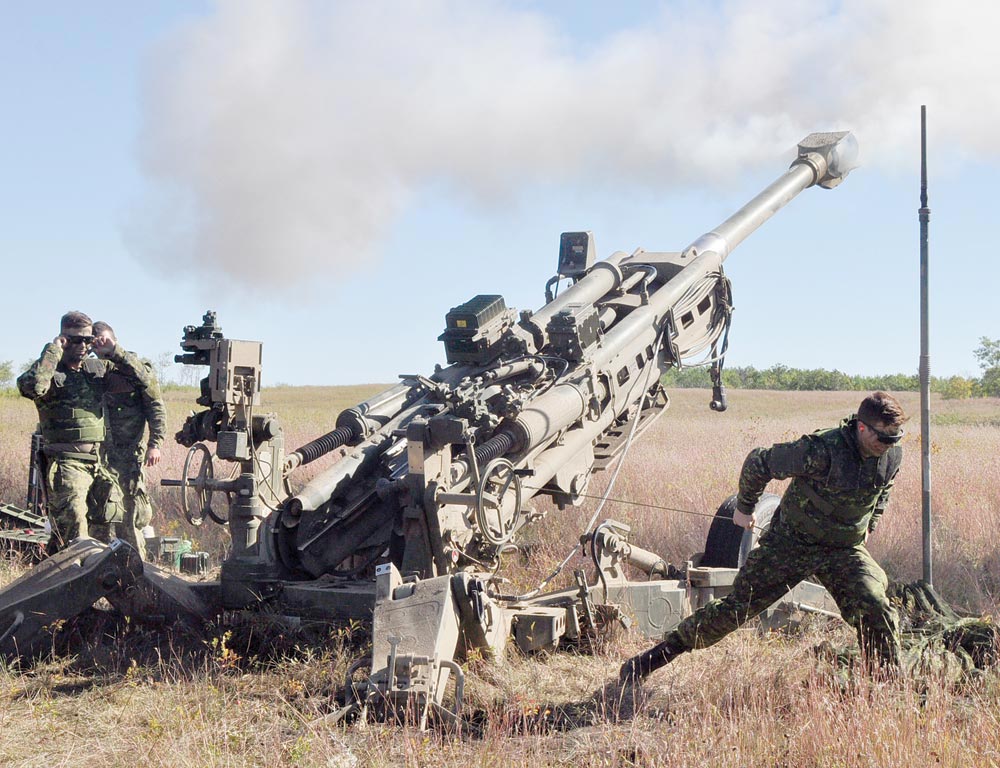


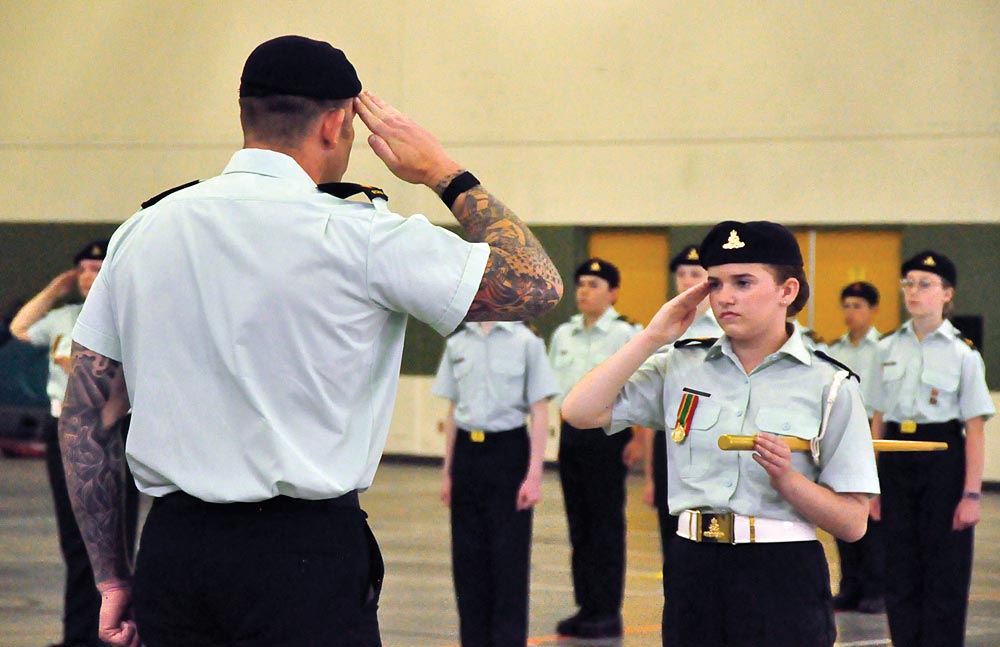

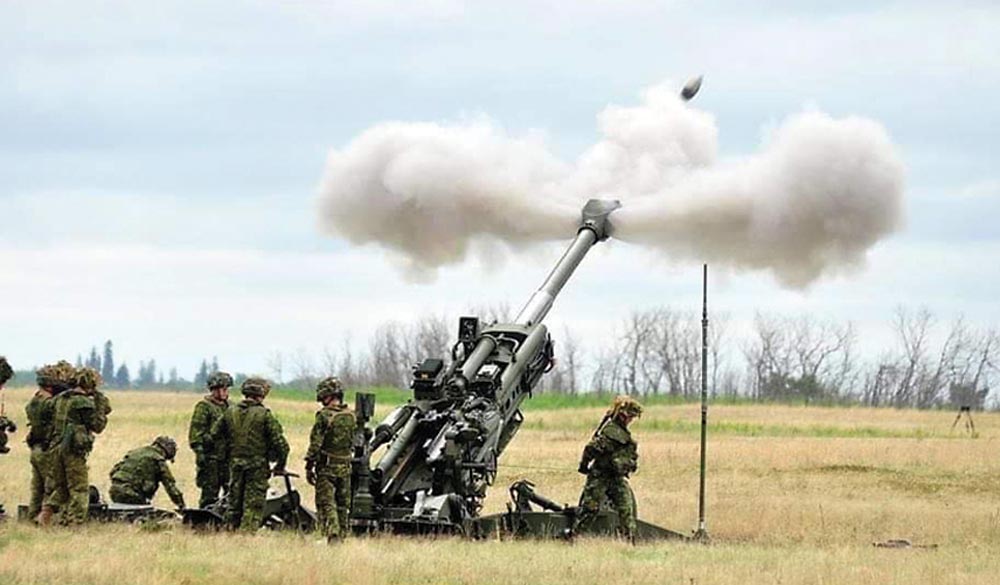
Col (Ret’d) Peter Williams
Stag Special
This year marks the 125th anniversary of the establishment what is now known as 1RCHA, originally based on A and B Batteries – the first “full-time” or “regular” elements of the post-Confederation Canadian Army.
This is a significant Canadian military and Gunner milestone.
Post-Confederation
Upon the withdrawal of British forces from Canada in 1871, Canada’s first full-time or regular Army units were created by Militia General Order No 24 dated Oct. 20, 1871, which authorized the formation of two “Batteries of Garrison Artillery and Schools of Gunnery, in order to provide for the care and protection of the forts, magazines, armament and warlike stores, recently, or about to be, handed over to the Dominion Government, in the Provinces of Ontario and Quebec.”
The batteries were A Bty at Kingston and B Bty at Québec City. In addition to performing garrison duties, A and B Btys were to serve as “practical Schools of Gunnery for the training of all ranks of the militia artillery.”
A and B Btys of 1RCHA are direct descendants of these 1871 originals and represent the creation of Canada’s Permanent (Regular) Army and are the oldest continuously serving regular component in the Canadian Armed Forces.
The original commanders of A and B Btys were LCols GA French and TB Strange, respectively. Both original commanders were seconded from the British Army to serve as Dominion Inspectors of Artillery and Warlike Stores in their respective provinces.
Aside from LCols Strange and French and a nucleus of Royal Artillery Warrant Officers (WOs) and sergeants who chose to stay in Canada when the British garrisons were withdrawn, the officers and men who filled the ranks of the batteries to man the fortifications at Quebec and Kingston were drawn exclusively from the Active Militia artillery batteries of Ontario, Quebec and the Maritimes serving, at the outset, on a year long engagement.
The Gunnery Schools opened for training in 1872. Among the candidates attending the first short course were officers from the Ottawa Brigade of Garrison Artillery, St Catharines Garrison Artillery, Kingston Field Battery, Québec provincial Brigade of Garrison Artillery, Bruce Field Battery and Saint John, New Brunswick Garrison Artillery.
In 1876, there were two distinct divisions in each of the Permanent Batteries; the mounted, which turned out as Field Artillery with nine-pounder rifled muzzle loaders (RMLs), and the dismounted which drilled as Garrison Artillery, mainly with 40-pounders and 110-pounders.
An event of historical interest occurred in 1873. LCol French resigned from the Canadian Militia to become the first commissioner of the North-West Mounted Police (NWMP), which is now the Royal Canadian Mounted Police (RCMP). Fifteen NCOs and men from B Bty and a considerable number from A Bty volunteered and were sent to the police, the Royal Canadian Artillery (RCA) thus becoming, in a sense, the parent of the RCMP.
As distinguished Canadian historian George FG Stanley states, “… the Royal Schools of Gunnery at Quebec and Kingston, within a few years, provided the militia artillery with a leaven of well-trained NCOs and Gunners which it had never before possessed. Owing to this, perhaps more than to anything else, the artillery established itself as the most efficient branch of the Canadian militia service and acquired a pride in itself which it has never ceased to possess.”
Formation of C Bty
In 1880, Queen Victoria graciously gave her consent to the title “Royal” being given to the Gunnery Schools, and three years later, with the authorization of C Bty, the first permanent Canadian artillery regiment came into being, to be known as the “Regiment of Canadian Artillery.”
Col Josiah G Holmes, a native of St. Catharine’s, Ont., and who was one of the founding officers of A Bty in Kingston, had the distinction of being the first Commanding Officer (CO) of C Battery in Esquimalt, BC, from 1887 to 1893.
C Bty was not actually formed until 1887 in Victoria, BC, on Vancouver Island. Volunteers came to from the new battery, from A and B Btys. These are believed to have been the first troops to complete the trans-Canada crossing using the newly completed Canadian Pacific Railway (CPR). In 1890, the first barrack was built at Work Point, Esquimalt, and C Bty moved in.
North-West Rebellion
A and B Btys saw their first actions during the North-West Rebellion of 1885. On March 27, 1885, A and B Btys received orders to proceed west on active service. Under the command of LCol CE Montizambert, the two batteries left Renfrew, Ont., by rail for Qu’Appelle — now in Saskatchewan.
On reaching Qu’Appelle, the two batteries split. A Bty and the Winnipeg Field Battery joined Sir Frederick Middleton’s column. B Bty went west to Swift Current to join LCol William D Otter’s force. In addition to their guns, A and B Btys eventually each manned a Gatling gun and both provided their Garrison Divisions as infantry companies to the force. LCol Montizambert commanded all artillery in the force and moved with Middleton’s column.
A Bty under Gen Middleton, fought at Fish Creek on April 24, 1885. The Battery suffered casualties of three killed and 12 wounded in its first action, including Gnr William Cook, who became the first Canadian Gunner killed in action and after whom the present-day 1RCHA headquarters building is named.
A Bty and the Winnipeg Field Battery would go on to fight in the Battle at Batoche May 9 to 12, where the Gatling gun played a crucial role, particularly in helping to save the guns on the first day.
That same year B Bty participated in the fighting at Cutknife. The Gunners fought its first battle on May 2. Successfully fending off several determined attacks against its guns, Maj Short led the Garrison Gunners and NWMP in four counter-attacks against the First Nations warriors.
Miraculously, the Battery suffered only four wounded during the battle. The Battery experienced extreme difficulties with the seven-pounder RML guns which they had borrowed from the NWMP — being told that the nine-pounders were too heavy to move across the prairie in that area. One of the seven-pounders went out of action with a collapsed trail after its first shot.
Brevet-Captain (later major-general) Rutherford rigged the second carriage with rope in an effort to prevent this, but the cannon came loose and had to be lifted back onto its frail carriage after each firing.
The Gatling gun was instrumental in holding the First Nations warriors away from the gun line. The Battle of Cut Knife marked the first use of the machine gun by Canadian soldiers and the last time in Canadian history that bows and arrows were employed in battle. Both Batteries remained in Saskatchewan until the summer of 1886.
Second Boer War and its Aftermath
The Second Boer War in South Africa (1899 to 1902), and subsequent fielding of the Canadian Artillery Brigade, saw the reformation of C Bty, which formed part of the second Canadian contingent, along with D and E Btys. Each battery was equipped with six 12-pounder, rifled breech-loading (RBL) guns.
Captain (later major-general) HA Panet in command of C Bty when British Gen Plumer relieved Mafeking, May 15 to 17, 1900, was awarded the Distinguished Service Order (DSO). After arriving back in Canada, C Bty was again disbanded in 1901.
Previous to this campaign, guns had not been specifically allotted in support of a particular arm. With the redesignation of the Royal Canadian Artillery Field Brigade to the Royal Canadian Horse Artillery (RCHA) Brigade in 1905, a British practice was adopted. It was decided in future, horse artillery batteries would gallop with the cavalry while field batteries would support the more slowly moving infantry.
Further change followed this conflict. Until this campaign, artillery had always faced the enemy in the open, with no attempt at concealment. This practice now proved suicidal and the deployment of guns in concealed positions became mandatory; also, the use of smokeless powder was realized for the first time.
“Indirect fire” was born. As a result, beginning in 1906, new artillery pieces were introduced. Orders were placed to provide horse and field batteries with 13-pounders and 18-pounders, respectively.
Great War
The Royal Canadian Horse Artillery (RCHA) was placed on active service on Aug. 6, 1914 for instructional and camp administration duties. Twenty days later, it mobilized the RCHA Brigade, Canadian Expeditionary Force (CEF), which embarked for England on Sept. 30, 1914 with 13-pounder guns.
The RCHA Brigade — first under LCol Panet and later under LCol WHP Elkins — disembarked in France on July 20, 1915, where it provided mobile field artillery support as part of the Canadian Cavalry Brigade in France and Flanders until the end of the war.
A and B Btys saw action at the Somme, Hill 70, Cambrai and the ‘Hundred Days’ in late 1918. During the war, C Bty was reformed in Kingston, Ont., as a depot training battery in 1915.
Between the Wars
Between the two World Wars, A and B Btys were stationed in Kingston, while C Bty moved to Winnipeg, the latter having moved there in 1919. As Canada’s only regular artillery units, they were equipped with 18-pounder guns.
During the 1920s the Non-Permanent Active Militia artillery batteries trained at local headquarters every winter and spent a week at practice camp in the summer. Units were small but keen, judging by the enthusiasm shown by most at the annual competitions fostered by the Royal Canadian Artillery Association (RCAA).
Camps were conducted by the RCHA and the Schools of Artillery, and were held in Camp Petawawa, Ont., Camp Shilo, MB, and Camp Sarcee, AB.
During this period A and B Btys were mechanized in 1930, but it wasn’t until 1937 that C Bty parted with its horses. In 1929, the inevitable but sad day arrived, when The Regiment was informed it was to become mechanized. Everyone had become deeply attached to their horses.
Each horse was assigned a number and a name, the name starting with the battery letter in the RCHA. There are few military spectacles more stirring or picturesque than that of horse-drawn artillery, and crowds always turned out when the batteries appeared on the streets or highways.
It is even recorded when B Bty was proceeding to Camp Petawawa in the summer of 1909, the inhabitants of Smiths Falls, Ont., hearing a stopover was intended on the outskirts of their town, bought and laid 300 feet of piping for watering the horses.
Between 1922 and the early 1930s, when horses were replaced, all three batteries of the RCHA performed the Musical Drive at numerous events for the public. The popular mounted displays were based on the famous drive performed annually by the RHA.
The last drive was performed in Winnipeg in 1933, when Capt “Ham” Roberts — who nine years later, as MGen JH Roberts, would command the forces taking part in the Dieppe Raid — staged C Bty’s final display.
Second World War — Immediate Aftermath
In September 1939, A, B, and C Btys and the 54th Field Batteries mobilized to form the First Field Brigade RCA. This was the first occasion all three RCHA batteries served together. It was redesignated 1st Field Regiment, RCA on Dec. 21, 1939. The Regiment embarked for England in December 1939 and, in June 1940, it went to France as part of the Second British Expeditionary Force, in the abortive attempt to stem the German invasion of France.
Once on the continent, it reached a point west of Le Mans before being ordered back. The Regiment’s stay lasted a mere four days, and they nearly had to leave their guns behind when the British headquarters ordered all guns and transport destroyed in order to ensure enough room for the evacuation of personnel.
The determination and stubbornness of the Commanding Officer (CO) LCol JH Roberts prevailed, and the Regiment was the only one to return its field guns to England.
On Jan. 1, 1941, A, B, and C Btys were redesignated the 1st Field Regiment RCHA (1RCHA). The Regiment then went on to see action in Sicily, Italy, including at Ortona and Cassino as part of the 1st Canadian Infantry Division.
In March 1945, the Regiment moved with the 1st Canadian Corps to North-West Europe where it served until the end of the war. The overseas regiment was disbanded on Aug. 25, 1945. During the war, the Regiment progressed from the 18-pounder to the 18/25-pounder and finally to the new 25-pounder gun-howitzer.
On June 1, 1945 a second Active Force component of the regiment was mobilized for service in the Pacific theatre of operations under the designation 1st Canadian Field Artillery Battalion, RCA, CASF.
1RCHA, which had returned to Camp Petawawa after the war, was renamed the 71st Regiment RCHA, and was moved to Camp Shilo in Manitoba, when the latter was chosen as the site for the Royal Canadian School of Artillery (Field Branch). By the end of 1951, the post-war organization of the Active Force artillery had undergone several changes. In 1949, 71st Regiment RCHA reverted back to its wartime designation of 1RCHA.
In 1949, 1RCHA had the honour of forming B Bty (Light), the airborne artillery component of the Mobile Striking Force. This battery later became the 1st Light Battery (Para) RCA, which later became 1RCHA ‘s Z Bty, and which was equipped with 75mm pack howitzers and 4.2-inch mortars.
Korean War
War erupted in Korea in 1950. In response to the United Nations (UN) appeal for the provision of troops to resist communist aggression in Korea, the 2nd Field Regiment RCHA (2RCHA) as raised at Camp Shilo in 1950 as part of the Canadian Army Special Force. The term “Field” was dropped from the titles of the two RCHA regiments in 1951.
Volunteers came from 1RCHA, the Schools and selected Militia artillery units. 1RCHA upheld this reputation after it replaced the 2RCHA in May 1951.
In the 25th Brigade in 1952, many raids were carried out by the 1st Battalion Royal Canadian Regiment (1RCR), supported by 1RCHA’s A Bty. A bond of mutual admiration grew between the battery and the RCR to the point where the guns of A Bty had the RCR crest painted on them.
A letter from the 1RCHA CO LCol EMD (Teddy) McNaughton — who in March 1953 changed his surname to Leslie — to the infantry CO confirmed this. A phrase in the letter would soon haunt A Bty: “It is also my intention that should ever the day come, from which the Lord preserve us, that a gun of A Battery shoots short onto the Royal Canadian Regiment, that gun and the subsection thereafter for 25 years will forgo the high honour and distinction of wearing the Colour and the Cypher of the Royal Canadian Regiment.”
It was with commendable frankness, but undoubtedly with no little chagrin, that a little more than a month later the Regimental diarist recorded the forfeiture of this privilege by a gun of A Bty. To the embarrassed members of that gun detachment, 1977 must have seemed far distant indeed.
Two years later, however, in view of the consistently fine support given by 1RCHA to the RCR, the infantry CO asked that the penalty be cancelled, and from that time A Bty has proudly worn the RCR crest on all its guns.
The regiment served in theatre from May 1952 to April 1953 as part of the 25th Canadian Infantry Brigade Group, 1st Commonwealth Division. 1RCHA handed over to the 81st Field Regiment RCA in April 1953.
Cold War
In the mid-1950s the RCHA regiments turned in their 25-pounders for the C1 105mm towed howitzer, and in 1958, replaced the 4.2-inch mortar in the light batteries with M1A1 155mm medium towed howitzers.
In November 1957, the Regiment moved to Germany to take up its initial cycle of tours with NATO at Fort Prince of Wales near Hemer, Westphalia. In 1960, the unit moved to Camp Gagetown, New Brunswick, where it remained until 1966.
In 1960, Air Observation Troops were added to the four RCHA regiments (CFB Gagetown, Garrison Petawawa, CFB Shilo and Fort Prince of Wales, Germany), and the two original Flights were reduced to nil strength.
The new Air OP Troops operated under regimental control until 1970-71, when they converted to Kiowa helicopters and were subsequently absorbed into the Air Command — later the Royal Canadian Air Force — helicopter squadrons.
In 1967, 1RCHA again deployed to Germany as a three-battery regiment and became the permanent Gunner unit supporting 4 Canadian Mechanized Brigade Group (4CMBG).
In 1968, 1RCHA in Germany, replaced its towed guns with self-propelled M109A1 155mm howitzers. In 1970, the Regiment, along with 4CMBG, moved from the British Army of the Rhine (BAOR) in Northern Germany to the Central Army Group (CENTAG) in South-West Germany.
The Regiment’s new home was a former French airfield at CFB Lahr. In 1976, 1RCHA received a troop of Blowpipe air defence missiles. These are the only air defence troops in 1RCHAs history.
Return to Canada
As a result of the downsizing of the Canadian Forces (CF) in 1992, 3RCHA was reduced to nil strength. 1RCHA moved from Germany, on the disbandment of 4CMBG, to replace 3RCHA at CFB Shilo. 1RCHA would now provide support to 1CMBG. The guns of the three remaining Regular Force Field Regiments (1RCHA, 2RCHA and 5RALC) were re-distributed, giving each unit a mix of two batteries of M109s and one battery of 105mm C1 Howitzers.
In 1997, a new, longer range, light 105mm gun, the French LG1, replaced the C1 howitzers in the Regular Force units.
UN Peacekeeping — NATO Missions In Europe
In August 1992, 1RCHA deployed for a six-month tour on Op SNOWGOOSE as part of Canada’s commitment to the UN Force in Cyprus (UNFICYP). This was the unit’s first peacekeeping mission. 1RCHA was followed by 2RCHA as the last Canadian unit on that mission.
From April to October 1994, 1RCHA provided a Mortar Troop, fire support co-ordination centre (FSCC) and forward observation officers (FOOs) for the Canadian Battlegroup. The Regiment fired an 81mm illumination round over the heads of factions involved in a firefight as a deterrent on July 3, 1994. This was the first operational round fired by Canadian Gunners since the Korean War. The mortar task continued with further rotations from 1RCHA, 2RCHA and 5RALC Gunners into 1999.
In 1997, 1RCHA began its support for the NATO Stabilisation Force (SFOR) and Op PALLADIUM in Bosnia. The Regiment supported the 2nd Battalion Princesses Patricia’s Canadian Light Infantry (2PPCLI) Battle Group and then the Garrison Edmonton-based Lord Strathcona’s Horse (Royal Canadians (LdSH(RC)) Battle Group during this period.
In 1999, 1RCHA deployed C Bty as an infantry company and A Bty deployed as a gun battery equipped with the LG1 105mm howitzer towed by modified Grizzly Armoured Personnel Carriers (APCs). This set the pattern for subsequent deployments by all three Regiments until 2002, when 5RALC deployed Q and R Bie in those roles for the last time.
Thereafter, only Battery Commander (BC) and FOO parties were deployed until the rotations stopped in 2004. The drawdown of the Gunner commitment to the former Yugoslavia was necessary in order to meet the new demands of the War in Afghanistan.
The Regiment assumed responsibility for 1CMBGs residual mortar capability in 2002, culminating in C Bty deploying to Afghanistan on Op APOLLO with 3PPCLI as part of Canada’s support to the war on terrorism. The Battery deployed with the BC, FOO parties and a Mortar Troop equipped with four 81mm mortars.
The Battery took part in air assault operations designed to destroy the Taliban and helped to defend the Kandahar airfield. No major engagements occurred, but the Battery did fire one mission with high explosive (HE) against a suspected Taliban mortar position.
The Battery also fired numerous Illumination missions supporting 120mm mortars fired by the US Rangers defending Kandahar Airfield (KAF) from Taliban attacks. A Force Protection Platoon from A Bty deployed to support Canadian operations in Camp Mirage in the United Arab Emirates.
In February 2006, the Canadian BG moved south to Kandahar, where combat operations were much more intense. The Canadians needed artillery support for this new area of operations and the M777 light 155mm howitzer was rushed into service with 1RCHA in order to fill this gap.
A Bty deployed with four 155mm M777 guns in February 2006 for a six-month tour with the 1PPCLI BG. The 1RCHA Regimental Fire Support Co-ordination Centre (FSCC) deployed with the Canadian-led HQ Regional Command (South). B Bty deployed in support of 2PPCLI in 2008.
Harkening back to the Korean War and showing Canadian Gunners still meet the high standards set for them by their predecessors, both the PPCLI and the RCR asked the guns of the Batteries which supported them be emblazoned with their Regimental badges in recognition of the outstanding support given to them by “their” Gunners.
The conflict in Afghanistan resulted in a re-organization of the Regular Force field regiments in Canada in order to better meet the demands of mounting a very large and complex gun battery for long-term operations.
In 2010, each of the Regular Force Regiments was organized into two field batteries equipped with the M777, an OP battery and a locating battery. This re-organization saw the return of V, Y and Z Btys from the Supplementary Order of Battle to 5RALC, 2RCHA and 1RCHA, respectively.
Recent Expeditionary Operations
Latvia
Since 2017, in support of NATO, 1RCHA has periodically provided a four-gun M777 battery as part of Canada’s Enhanced Forward Presence Battle Group Latvia.
Ukraine
From February to November 2020, 1RCHA-led Task Force Ukraine, on Op UNIFIER Roto 9, the Canadian Armed Forces (CAF) mission to support the Security Forces of Ukraine. 1RCHA was the first Gunner unit to exercise this leadership role.
Domestic Operations
1RCHA has supported many domestic operations, including Op ASSISTANCE, to help Manitobans fight the ‘Flood of the Century’ in 1997, Op RECUPERATION, as an ice storm devastated parts of Ontario, Québec in 1998, and Op GRIZZLY in Kananaskis, Alberta for the G8 Summit in 1998, to fighting forest fires in British Columbia in 1998.
Since 1962, Gunners have been involved in avalanche control duties at Roger’s Pass, British Columbia. Under an agreement between the Department of National Defence (DND) and Parks Canada, the Regiment (normally by drawing on the unit stationed at CFB Shilo, but also employing Reserve Gunners and other units when the Shilo Gunners are not available) furnishes a troop commanded by a junior officer with one or two 105mm howitzers to carry out counter-avalanche firing from Dec. 1 to April 1 each year.
Because of the isolated nature of their task, detachments are normally rotated at six-week intervals. Firing takes place from a number of permanent surveyed-in positions, and shoots are programmed based on snow build-up analysis by Avalanche Control officials. High explosive rounds are fired at critical trigger points along some 40 kilometres of highway in Glacier National Park in order to bring down snow build-up before it can cause a major avalanche.
Regimental birthday is Dec. 1, 1898 — Regiment Today
1RCHA’s mission from CFB Shilo is to generate artillery forces which can Command, Sense, Act, Shield and Sustain, within the Battle Task Standards, in support of affiliated units, and in accordance with the Army Managed Readiness Plan.
Allocated Batteries: A (The Queen’s) Bty: M777 155mm howitzers; B Bty: M777 155mm howitzers; C Bty: Surveillance and Target Acquisition (STA) Bty, equipped with the Q49 Light Weight Counter Mortar Radar (LCMR); CU1-73 Raven B Miniature Unmanned Aerial System (Mini-MUAS); and the Halo II Acoustic Weapon Location System (AWLS); Z Bty: Observation Post Battery, equipped with the Light Armoured Vehicle Observation Post Variant (LAV OPV); HQ and Services Bty, which provides administrative, logistics, communications, maintenance, medical and meteorological support to the Regiment.
Alliances and Affiliations: 1st Regiment, Royal Horse Artillery of the British Army; CFB Shilo-based 2502 Royal Canadian Army Cadet Corps
The Regiment continues to fulfill its role of providing indirect fire support to 1CMBG and is pursuing a training regime which permits it to be ready for any task.
For more historical information or to follow on social media platforms:
During the First World War, the RCHA Brigade, as it was then known, was a unit of and supported the Canadian Cavalry Brigade (RCD, LdSH and the Fort Garry Horse). The Canadian Cavalry Brigade was normally attached to British Divisions and Corps, and was not technically part of the Canadian Corps. That said, the Canadian Cavalry Brigade did support the Canadian Corps during the 100 Days Amiens Offensive in late 1918, which led to the November armistice. The RCHA Brigade War Diaries can be accessed at the following links:
- 17 Oct. 1914 – 29 Feb 1916:
- https://recherche-collection-search.bac-lac.gc.ca/eng/Home/Record?app=fonandcol&IdNumber=2004768&new=-8585592463185971090
- 1 March 1916 – 30 Oct. 1917:
- https://recherche-collection-search.bac-lac.gc.ca/eng/Home/Record?app=fonandcol&IdNumber=2005960&new=-8585592460484648148
- 1 Nov. 1917 – 21 May 1919:
- https://recherche-collection-search.bac-lac.gc.ca/eng/Home/Record?app=fonandcol&IdNumber=2004769&new=-8585592460037439433
1RCHA’s current CO is LCol Joe O’Donnell, who when A Bty BC taught his Gunners how to survive a fall in a frozen lake, with assistance from Dr. Popsicle. 1RCHA continues to hone its artillery skills using the M777 during Ex FROZEN GUNNER and EX LIMBER GUNNER. RCA Museum has a treasure trove of artifacts from the RCA, including photographs. Kingston Cup is always a full house at Gunner Arena when A Bty battles B Bty on the ice for the annual hockey game. 1RCHA has served in wars from the Great War to the Afghan War, plus doing peacekeeping duties for the United Nations. During the winter months 1RCHA sends Gunners to BC’s interior where the are part of Op PALACI. Photos Jules Xavier/Shilo Stag & RCA Museum
